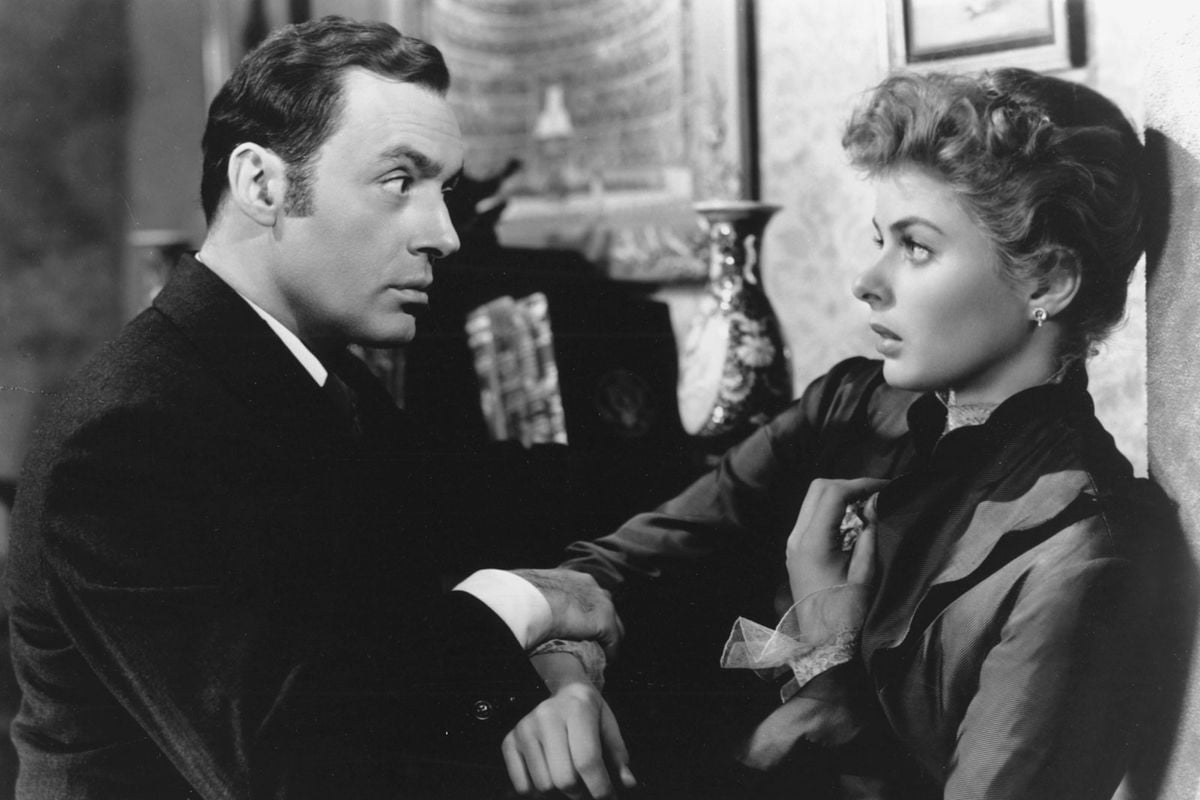It is a truth universally acknowledged that commercial filmmaking has recently entered a new phase of life. Countless articles and blogs bemoan the lack of ‘original’ content coming out of the Hollywood machine. It can be frustrating to feel that there are nothing but high-octane action movies and live-action Disney remakes in the cinema. I find that the lack of interesting films on release increasingly makes me want to look back, to examine what earlier filmmakers did.
The limitations of black-and white photography lend themselves to experimentation in lighting, angles and makeup. The concerns of films from the silver era, while sometimes unsubtle by today’s standards, are surprisingly diverse. And of course, having railed against the remake-heavy culture of Hollywood today, I am going to write about a remake: George Cukor’s Gaslight (1944). Boy meets girl. Boy and girl marry. Boy convinces girl that she’s going insane for shady ulterior motives.
In Gaslight Ingrid Bergman’s Paula loses her autonomy, her dignity, and finally her sense of self, as her whirlwind courtship with Gregory Anton (Charles Boyer) takes a horrifying turn for the nightmarish. The original play gave rise to the term ‘gaslighting’, which is still used today. And the emotional and physical terrors that Gaslight documents are terrifyingly familiar. Gaslight is painfully tense. Paula’s sudden movements from frenetic delight to sobbing despair are intensely unsettling. Anton’s powers of suggestion are supreme: he dangles possibilities in front of his wife’s eyes, never quite articulating his suggestions. He whips her into a frenzy of uncertainty that nearly succeeds in breaking her grip on reality.
Part of why Gaslight is so disturbing is that it inverts Hollywood tropes that we all buy into on some level. Anton and Paula’s whirlwind courtship could, in another film, be deeply romantic. We don’t object to the idea of love at first sight, even though it exists only in fiction. Only recently has Disney begun to question its validity: “You can’t marry a man you just met,” says Frozen’s Anna to her sister. Gaslight portrayed the danger of doing just that, 70 years earlier; Paula’s recklessly blind belief in her husband is built on a foundation of ‘trust’, a touchstone of the modern romantic-comedy.
Nonetheless, there is hope to be found. George Cukor, known as a ‘woman’s director’, approaches the story from Paula’s perspective. We rarely see her husband alone, and his designs are obscure until the end. The plot threatens to make Paula simply a passive recipient of abuse, yet in the film’s climactic scene it is she who holds the power to save or damn her husband. Of course Gaslight is in parts corny. The fights are old-fashioned and some of the drama is heavy-handed. Yet overall it is strikingly chilling. Joseph Ruttenberg’s cinematography, which constantly returns to that image of the hanging lamp slowly dimming, is full of dread. It is an exaggerated version of life, a gothic exploration of the way we trust those we love, and what happens when that trust is abused.



